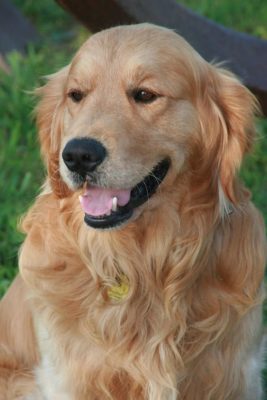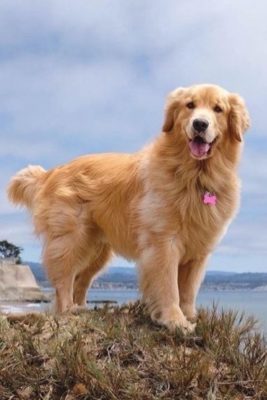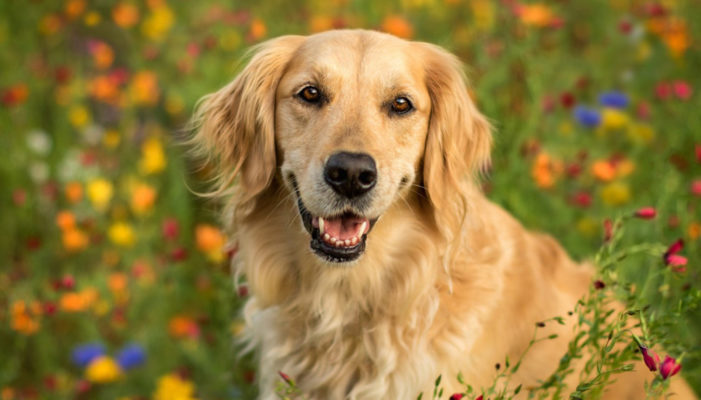Golden Retriever
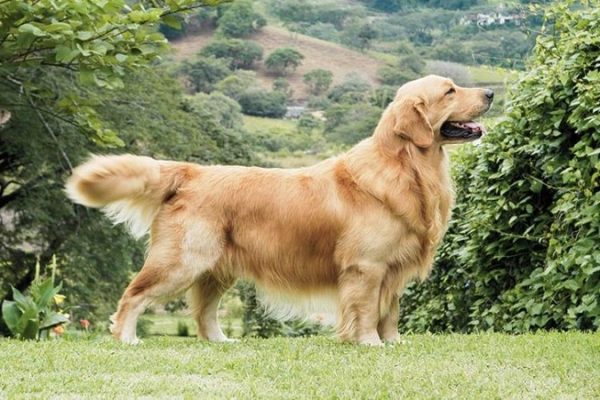
Today, the use of the Golden Retriever is considered very extensive. The Golden Retriever wants to be useful to its owner. It is a faithful friend and a great helper on the hunt, a good water rescuer and companion. The breed is increasingly used for various rescue operations, as a guide dog, and at customs.
Table of Contents
Breed Information
| Another Name | Flat-coated Retriever |
| Origin | Scotland |
| Height | Males 56-61 cm Females 51-56 cm |
| Weight | 25-41.5 kg |
| Fur | Long |
| Color | Any shade of gold or cream |
| Lifespan | 10-12 years |
| FCI Classification | Retrievers – Flushing Dogs – Water Dogs |
| Group | Hunting dogs |
| Price | From $200 |
Breed Photos
Origin History
The formation of the Golden Retriever breed began in Great Britain in the 19th century. The breed’s pedigree counts multiple relatives with the dogs of Irish setters, water spaniels, and Labradors. One version of the Golden Retriever’s origin tells us that the breed was bred thanks to the Scottish Lord Tweedmouth. The Lord visited the Brighton Circus in 1858, where he saw brilliant dogs, which he successfully bought back from the circus. From 1860 to 1890, Tweedmouth worked diligently to breed the Golden Retriever. According to the Lord’s records, the Golden Retriever resulted from a cross between an ancient member of the Tweedwater Spaniel and a Newfoundland.
In 1913 the first amateur club of the breed was founded. At the same time, the Golden Retriever was recognized by the English Kennel Club. The breed was officially standardized and recognized by the Fédération Cynologique Internationale only in 1954. Interestingly, the first retrievers had a dark color, which is still popular in the United States.
Appearance
The Golden Retriever is a natural-born hunter who is masterful at working in the water and opportunism poultry. He is harmoniously built and has an athletic musculature. The skull is massive enough, the transition from forehead to muzzle is smooth. The muzzle is long and tapers toward the nose. Big eyes, set deep and wide, rounded. Usually dark in color with an affectionate and attentive look.
The ears are medium-sized, drooping along the cheeks with a narrow end. The neck is long and muscular. The chest is deep. The abdomen is well upright. Strong limbs with well-developed musculature. The tail is below the back, moderately long, thick at the base, and with a cone-shaped end. The Golden Retriever’s coat is long and straight, with a thick undercoat. It tends to repel water. Allowable colors: All shades of gold, as well as cream color. White color is considered an outlier.
Character
Today, the use of the Golden Retriever is considered very extensive. The Golden Retriever wants to be useful to its owner. It is a faithful friend and a great helper on the hunt, a good water rescuer and companion. The breed is increasingly used for various rescue operations, as a guide dog, and at customs.
A Golden Retriever is good-natured and not prone to aggression. They are contactable and attentive to any request of their owner. Their cheerfulness and energy make them excellent babysitters for your child. Also, Golden Retrievers are often used as therapy dogs by orphanages. There, they help children cope with various mental disabilities. He is very affectionate and doesn’t mind spending time uncomplicated playing with any family member at all.
He needs long walks and exercise to stay in shape. The gentle and balanced nature of the Golden Retriever leaves no one indifferent. Because of its “golden” character, the Golden Retriever is the most popular breed among world cinema directors.
Care
The main problem of keeping a Golden Retriever is his hair. During the molting period, the pet’s hair will be all over the place without proper care. To take care of your pet’s coat, you should purchase a glove brush that will do an excellent job of combing it out daily.
Another natural attribute of the breed, Golden Retrievers love to swim. Their fur is perfectly adapted for this. Their eyes and ears should also be inspected twice a week. Clean their ears with a special solution if they get dirty or wet. An active dog’s claws will usually sharpen on its own during walks. If you notice that this is not enough, have the claws trimmed every month.
Training
Golden Retriever owners say he has a good tendency to be trained and has an excellent memory. It is important to start training from an early age. The Golden Retriever is not a dog that shows dominance. Here it is the opposite – the pet is completely dependent on the owner and submits only to him. The main criterion for the education of the Golden Retriever is the absence of cruelty and only an optimistic attitude.
Common Diseases
The stamina and health of the Golden Retriever are the envy of any hunting dog. However, the breed does have a certain tendency to develop such diseases:
- atopic dermatitis;
- otitis media;
- epilepsy;
- retinal atrophy;
- hip dysplasia;
- Willebrand’s disease (a hereditary blood disorder that causes bleeding).
Nutrition
An active dog like the Golden Retriever needs a balanced and regular diet. As a natural food for the Golden Retriever, any lean meat is suitable. The product’s daily rate is calculated as follows: 10-20 grams of meat per kilogram of dog weight. The rest percentage of the pet’s menu consists of cereals with the addition of vegetables. When choosing dry food, give preference to food in the premium segment for medium-sized breeds.
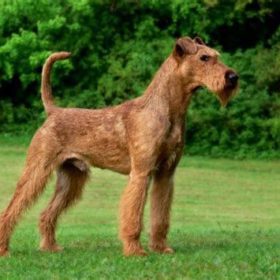 Irish Terrier
Irish Terrier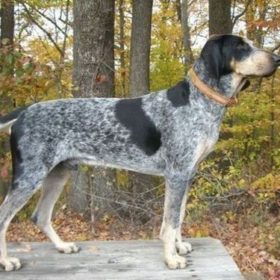 Petit Bleu de Gascogne
Petit Bleu de Gascogne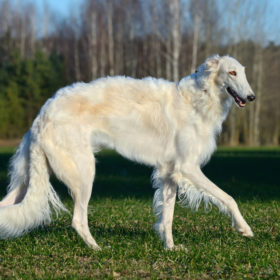 Borzoi
Borzoi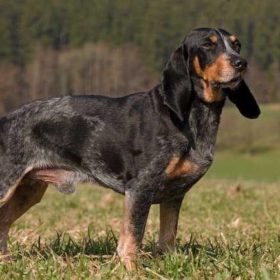 Small Jura Hound
Small Jura Hound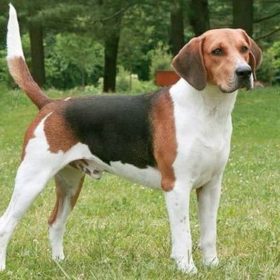 Beagle-Harrier
Beagle-Harrier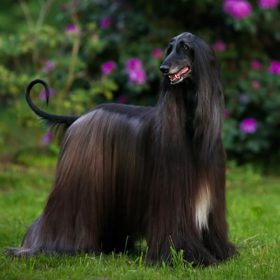 Afghan Hound
Afghan Hound